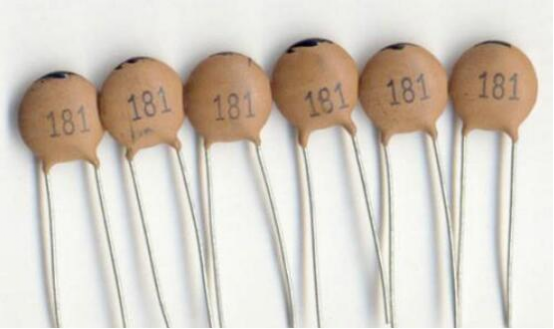Mainly different media materials. Different media types have different response speeds and polarizabilities to electric field changes because of their different main polarization types. The capacity under the same volume is different, and the dielectric loss and capacity stability of the capacitor are also different. The temperature stability of the dielectric material according to the capacity can be divided into two types, namely, class I ceramic capacitors and class II ceramic capacitors, NPO belongs to class I ceramics, and other X7R, X5R, Y5V, Z5U, etc. belong to class II ceramics.

What is a Class I ceramic, what are the characteristics?
Class I ceramic capacitor (ClassIceramic capacitor), formerly called high-frequency ceramic capacitor, medium non-ferroelectric (paraelectric) formulation, with TiO2 as the main component (dielectric constant less than 150), so it is the most stable Performance; or by adding a small amount of other (ferroelectric) oxides, such as CaTiO3 or SrTiO3, to form an "extended" temperature-compensated ceramic, exhibiting an approximately linear temperature coefficient with a dielectric constant increased to 500. These two dielectrics have low loss, high insulation resistance and good temperature characteristics. It is especially suitable for coupling capacitors in oscillators, resonant circuits, high-frequency circuits, and other circuits that require low loss and stable capacitance, or for temperature compensation.
How to express the temperature characteristics of class I ceramics
The temperature capacity characteristics (TCC) of Class I ceramics are very small, and the unit is often in ppm/°C. The change in capacity from the reference value is often much less than 1 picofarad. The American Electronics Industry Association (EIA) standard uses the form of "letter + number + letter" to indicate the temperature coefficient of class I ceramics. For example, the common C0G.
What is the temperature coefficient represented by C0G?
C means that the effective number of the temperature coefficient of the capacitor is 0 ppm/°C0, which means that the multiplication factor of the effective number is -1 (that is, the 0th power of 10) G means that the tolerance with temperature is ±30ppm, and the C0G capacitor is finally The TCC is: 0 × (-1) ppm / ° C ± 30 ppm / ° C. The temperature coefficient of the corresponding other Class I ceramics, such as the U2J capacitor, is calculated as: -750 ppm/°C ± 120 ppm/°C.
Is NPO and C0G the same type of capacitor? The NPO is a statement in the US Military Standards (MIL). It should be NP0 (zero), but it is generally used to write NPO (Europe). This is a shorthand for Negative-Positive-Zero, which is used to indicate the temperature characteristics. It shows that the capacitance temperature characteristic of NPO is very good, and there is no capacitance drift with positive and negative temperature changes. As we have seen from the front, C0G is the best temperature stability in class I ceramics, and the temperature characteristic is approximately 0, which satisfies the meaning of "negative-positive-zero". Therefore, C0G is actually the same as NPO, but it is only two standard representation methods (of course, C0K, C0J, etc. with smaller capacitance and slightly lower precision are also NPO capacitors). Similarly, U2J corresponds to the group code in the MIL standard as N750.
What is Class II ceramics, what are the characteristics?
Class II ceramic capacitors, formerly known as low frequency ceramic capacitors, refer to ferroelectric ceramic capacitors, and are therefore also referred to as ferroelectric ceramic capacitors. These capacitors have a large specific capacitance, and the capacitance varies nonlinearly with temperature and has a large loss. It is often used in electronic equipment for bypassing, coupling, or other circuits that do not require high loss and capacitance stability. Among them, class II ceramic capacitors are further divided into stable and usable stages. X5R and X7R are stable grades of Class II ceramics, while Y5V and Z5U are available grades.
What is the difference between X5R, X7R, Y5V, Z5U?
The difference is mainly in the temperature range and the change in capacitance with temperature. The table below suggests the meaning of these codes. Take X7R as an example. X represents the lowest capacitance of the capacitor can be operated at -55 ° C. 7 means that the capacitor can work at +125 ° CR. The representative value varies with temperature by ±15%. The normal operating temperature range of Y5V is -30 ° C to +85 ° C. The capacitance capacity changes from +22 to -82%; while the Z5U has a normal operating temperature range of +10°C to +85°C, and the corresponding capacitance changes from +22 to -56%.
Self Fusing Rubber Tape,Scotch Self Bonding Electrical Tape,Self Fusing Tape,Rubber Tape Self Fusing
Longkou Libo Insulating Material Co.,Ltd. , https://www.liboinsulation.com